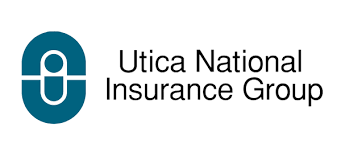What is Your Risk of a Cyber Attack?
June 23, 2015
At the Home Depot about 56 million credit card records were hacked. The New York Times reported that a data breach at JP Morgan Chase affected 76 million households and 7 million small businesses. The most famous was the Target breach, where around 70 million shoppers had their data compromised (the CEO ended up getting fired for this one). (Credit Union Times)
But did you know that every business who has clients’ personal information in their computers is vulnerable to unauthorized access, human error, and theft of digital assets?
The cyber risks businesses face are just a few years old. So it’s understandable that many of our clients here in the Utica, New Hartford area are just starting to grasp the significance.
For that reason, we’re going to start a 3 post series on cyber security. To give you an idea of how wide the problem is and how it could affect you, we’ll start with this post full of real life examples of what can happen to your business.
In our next post we’ll talk about what cyber breaches are really all about and then wrap up with a look at how you can manage the risk with a special Cyber Security Insurance Policy.
Cases of Cyber Attacks on Businesses and Non-Profits
Thanks to our friends at Philadelphia Insurance Company for these examples of major cyber security claims:
A burglar stole two laptops from the service provider of a regional retailer. The laptops contained the data for over 800,000 of the retailer’s clients. Turned out the retailer was required to notify all of the affected individuals. Total expenses incurred, $5M!
An employee of a private high school distributed by email the names, social security numbers, birthdates, and medical info of students and faculty, creating a security breach. The personal information of 1,250 individuals was compromised.
A rehab center’s employee improperly disposed of 4,000 client records in violation of the center’s privacy policy. The center agreed to pay fines and penalties. Plus they extended $890,000 in customer redress funds for credit monitoring for the victims.
A home healthcare organization had back-up tapes, laptops, and disks containing social security numbers, clinical and demographic information, and some patient financial data stolen. Over 365,000 patient records were exposed. The organization had to provide patients with free credit monitoring and credit restoration to victims of identity fraud.
A juvenile infected the computers of a regional computer consulting and application outsourcing firm. The worm caused the computers to launch a denial of service attack against the company, causing an 18 hour shutdown. Repair, restoration, and business interruption costs reached approximately $875,000.
A non-profit community action corporation printed two 1099 forms on one piece of paper. The forms were supposed to be separated and sent each to their rightful owner. An employee forgot to separate them and ended up sending tax forms with social security numbers to strangers.
We hope these examples get you thinking about the risks to your business or non-profit. The internet has been a boon to business marketing along with the profitable efficiencies of computer automation.
But dangers lurk and we are here to help. Watch for our next post, where we’ll talk about the risks inherent in your valuable data and your responsibility for it.
Until next time,
Your SZW Team
Scalzo, Zogby & Wittig, Inc. is your New Hartford area independent insurance agent. Call us for a quote on insurance for your home, car, business, or life at 315.792.0000.




